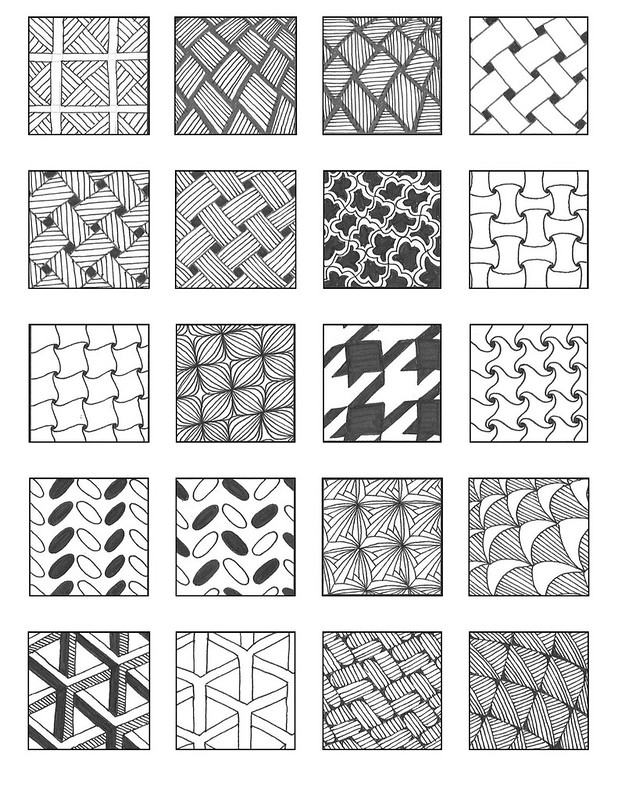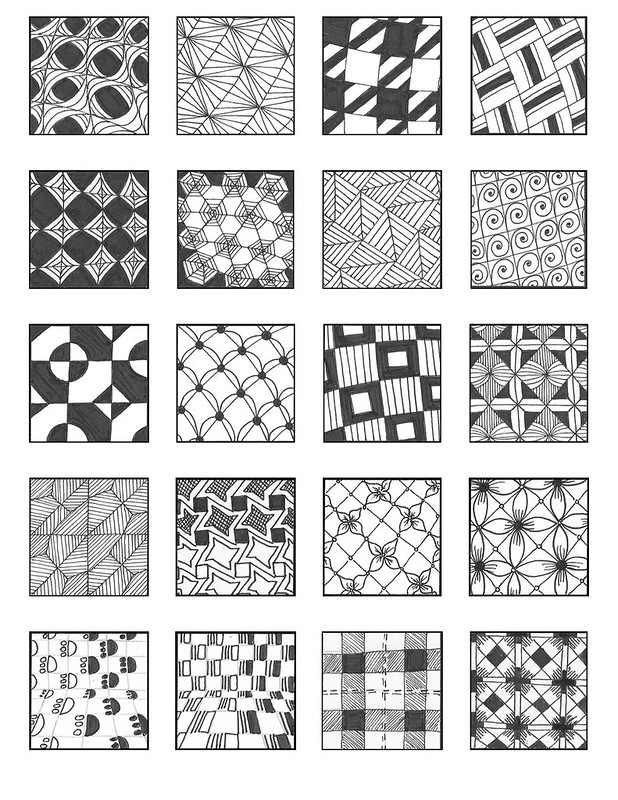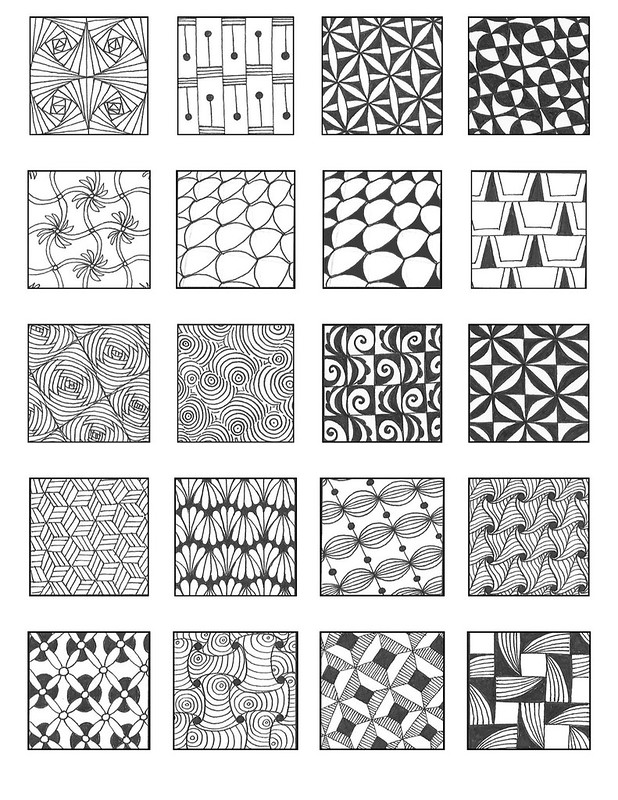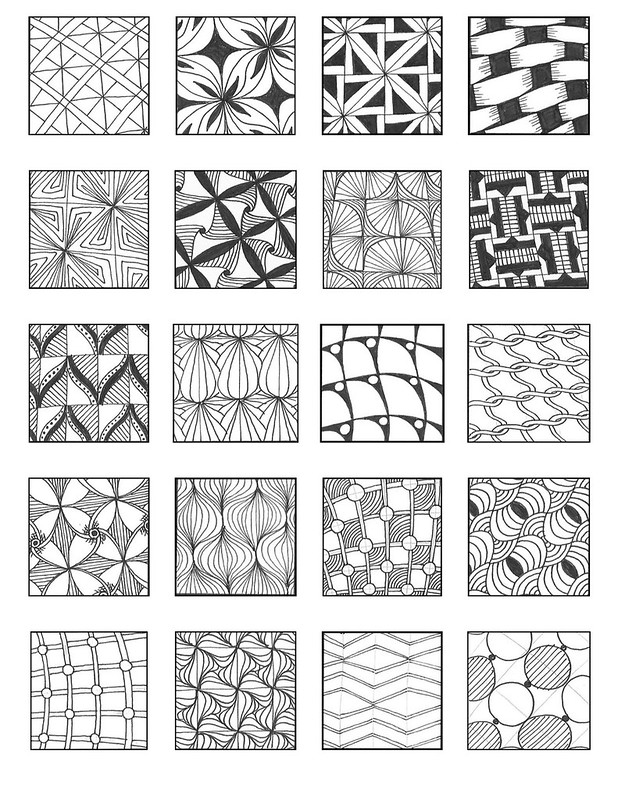Table of Contents
Project Overview
Theme: Play and experiment with lines, points, and simple shapes.
Problem: Create a black and white, grid-based composition. Inspired by your interests or a favorite piece of music, use scale. variation, repetition, pattern, and texture to demonstrate an understanding of visual rhythm.
Limits: simple, flat, black and white shapes, no text or large shapes.
Materials: Sketchbook, pencils, inking pens, Bristol Board 9×12″, ruler/t-square, tracing paper.
Concepts: Line, Points, Rhythm, Repetition, variety, pattern, grids, modular grid, scale
Technical Skills: thumbnail sketching, mark making, draftsmanship with rule/t-square, inking pens
Student Examples
See here for more student work.
Learning Outcomes
For the successful completion of this project, you should be able to:
- Develop multiple versions (iterations) using thumbnail sketching and refined sketches.
- Understand how lines and points create different visual rhythms.
- Demonstrate an understanding the basic principles of grids.
- Demonstrate attention to detail and craft using precise ruler measurements, drawing techniques, and inking pens.
- Share each phase of the design process by posting to the class site and providing critical supportive feedback to classmates.
Grading Rubric
Each project will be graded using the Project Rubric. Complete each part of the design process, following the due dates provided in each class meeting agenda.
Design Process
- Discover: Explore and experiment
- Define: Sketch + Iterate
- Develop: Inked Compositions
- Deliver: Post and Comment
1. Discover
Find a place to work with little visual and auditory distractions, is possible. Being either:
- Listing our your interests and hobbies or listen to a favorite piece of music.
- In your sketchbook, draw the visual ideas of shapes, breaking them down to simple lines and points or draw what sounds you hear.
- Imagine how the sounds look like shapes, lines, and patterns
- How they interact and relate to one another
- Do you hear and see repeated patterns?
- Are your lines feeling rough, sharp, or smooth and flowing?
- Draw for at least 30 mins. Best practice is at least 15 minutes a day. Cover at least 3-4 pages.
Write about it
Spend 10 mintues writing your observations of your sketching. Describe it in terms of lines, dots, patterns, and variation. How do your observations affect your understanding of what you choose to visualize or listen to?
Thumbnails: Pattern Squares
In your sketchbook, refine your sketches to draw and create unique patterns. Final assignment is 12 squares. Try varying the line weight (thick and thin) and the spacing (tight and wide) between the lines. Experiment by drawing the same pattern light and dark.
For more research on creating patterns read: Pattern Wong Principles
By: Emily Houtz
2. Define
Refine Patterns
Layout 1 piece of sketchbook paper with 6 squares (may vary depending on size of sketchbook).
- Top, bottom and sides have 1″ margin
- Squares: 3″x3″ with 1/2″ margin between each square along the bottom of them
- 1″ margin between the two columns of squares, along short side of page

Lightly redraw a selection of 3 patterns and 3 textures, one in each square. Use your inking pens or a very black pencil to refine and finalize your patterns and textures. These should look neat and clean.
Grids of Composition
Research
A grid helps a designer organize information to provide a sense of unity, consistency, clarity, and hierarchy.
- 15 reasons why a grid based approach will improve your designs
- Types of Layout Grids
- MOMA’s Grid Layout
Find at least 3 examples of grid-based designs in web design, magazine layout, poster designs, book designs, etc. Use tracing paper or other methods to outline the modules and analyze their structure.
Iterate
Use your refines sketch with your collection of 6 patterns to experiment with how you want your final layout design to look.
Organize your patterns to communicate the mood, feeling-experience, and rhythm of your inspiration.
Create multiple mockups of your composition to get a sense of how your patterns will work within a grid layout.
3. Develop
Grid Layout
Choose the best modular grid mockup to use as a guide. Trace (using the light table or measure and lightly redraw he final grid and patterns onto a piece of bristol.
Ink Composition
- Ink: Carefully ink your final composition using inking pens. If you prefer, to use bottled ink and pen, feel free.
- Tidy up: Erase all extra pencil lines and measurements. The Final work should be neat,m clean and well presented.
- Protect: Package and protect your work using tracing paper (refer to class demo).
Document
When you are finished, scan your artwork using the available scanner in the classroom or computer labs. Or take a well lighted, well composed photograph. This image will be uploaded to class blog for critique and grading.
Use this guide to avoid common mistakes when photographing your work with a camera phone.
4. Deliver
Submitting in your work
Follow the How to Post Your Work guidelines and include the project-specific details below:
- Post Title: Line Pattern Design
- Written Project Reflection: Document your thoughts about this project. Think about what you learned, what you could have done better (planning, material use, craft), and how you will apply what you learned to your next project. Consider and respond to the comments made in class during the critique.
- Images: Organize your post to include all images from the three other Design Process phases for this project. (Discover, Define, Develop).
- Category and Tags:
- Category = Project #1 Posts
- Tags = Deliver, Line Pattern Design
Providing Feedback
Part of your Project grade is leaving well-written comments for your peer-critique partner and at least one other student. Follow the How to Comment and Critique guide for specific guidelines for leaving constructive feedback.
REMINDER: You will receive a grade and comments from the Professor on your posts and peer comments. Without your deliver post, you will not receive a grade.
Critique
- Bring all parts of this project to class: Discover, Define, Develop.
- When presenting your work, start with following: your name, the project title, the theme of the project, what you feel you did successfully, what you can improve on next time.
- Your peers and the professor will provide supportive, constructive feedback.
- You will have an opportunity to revise your work based on the feedback and improve your work and your grade.








